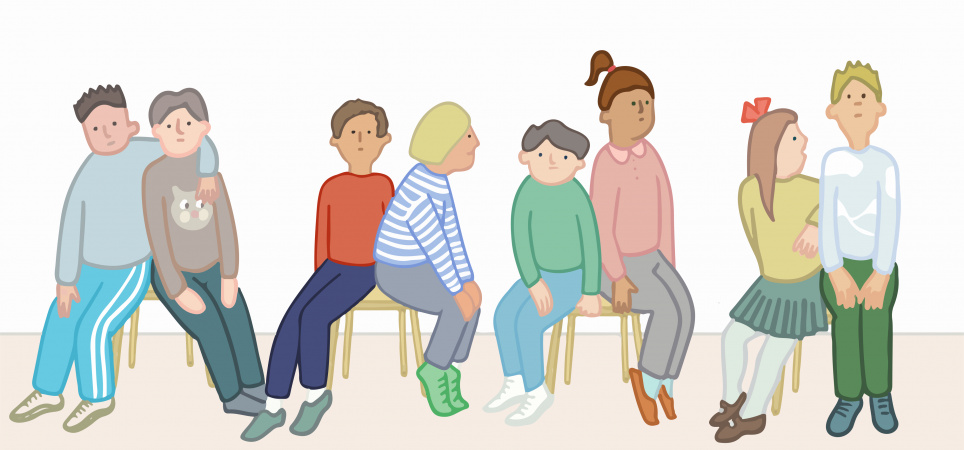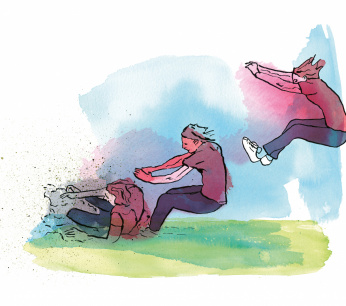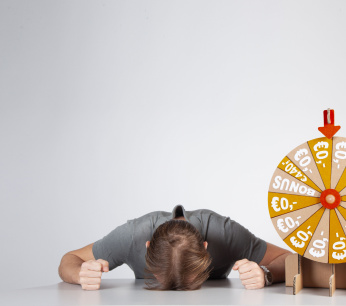Small class better for student and economy
Primary school students achieve much better results in smaller classes of maximum 21 students. This is not only good news for students, but also for the knowledge economy.

Picture: Nina Maissouradze
In the long term, an investment of 1,5 billion euros in smaller classes, among other things, will generate 3,5 billion in extra economic growth. This is evident from the report of SEO Economic Research of the University of Amsterdam that the agency requested by the AOb this spring.
On 1 July, the House of Representatives will start a discussion about group size in primary education, in response to the latest report about the size of the groups. The average has fallen slightly to 22,6, but a third of primary school pupils are still in a class of more than 25 children.
The reason for the SEO survey was that the Netherlands invariably spends less on education than the countries in the OECD top ten with which policymakers like to compare educational performance elsewhere. The study looked at measures in primary and secondary education to improve quality, limit teacher drop-out and reduce absenteeism.
Investing in education is effective anyway, according to economists. With a longer or better education, young people earn more later, so they spend more and pay more taxes. These are all effects that boost the economy and translate into higher economic growth. But not all investments are effective. According to the SEO researchers, class reduction and supervision of starters are very useful for primary and parts of secondary education.
In the long term, an investment of 1,5 billion euros in smaller classes, among other things, will generate 3,5 billion in extra economic growth
Guidance and smaller classes
For example, it helps enormously for the learning outcomes in both educational sectors to provide more intensive guidance to novice teachers, which also prevents high dropout rates among starters. Reducing classes in primary education and among starters in secondary education also significantly improves school performance. International research shows that a maximum of 21 students is the best size. Both measures cost money, but ultimately yield more money.
International research shows that a maximum of 21 students is the best class size
The package of better guidance and smaller classes requires an investment of 2 billion euros and ultimately yields a maximum of 6,9 billion in extra economic growth. According to the SEO researchers, this yield is on the high side because implementation takes time and various measures overlap. According to them, it is therefore more realistic to assume an additional annual economic growth of 3,5 billion.
There is a difference in the effect in primary and secondary education in the reduction of classes. The learning gains in primary education are high throughout the entire school period. In secondary education this is much smaller, except when starters in VMBO-T, HAVO and VWO have smaller classes. Then there is a great effect. In primary schools with many disadvantaged children, class reduction has an even greater positive effect on school performance.
Class reduction in primary education will generate substantial additional economic growth in the longer term. In secondary education, the economic effect for the smaller classes for starting teachers is less significant, but still substantial. In addition - but not included in the study - class reduction is beneficial for reducing the workload of teachers.
Teacher shortage
“The research proves what teachers have known for a long time: better education is provided in smaller classes. Schools that started half classes in May notice how well that works. Investing in smaller classes will pay for itself in the long run, ”says AObchairman Eugenie Stolk. “Of course we also understand that in times of teacher shortage it is not possible to reduce the classes in one fell swoop. But we can of course initiate the process to do that step by step. We will also let the House know that. ”
AOb-chairman Eugenie Stolk: 'Investing in smaller classes will pay for itself in the long run'
For example, according to Stolk, you could start with class reduction in disadvantaged schools, because the positive effect on learning performance is greatest there. “In addition, those schools have surrendered 150 million in the past ten years and the groups have grown. This increases the inequality of opportunities, so starting there has several positive effects. I think that such a plan for class reduction also greatly increases the attractiveness of working in education. The high burnout figures, the high absenteeism, the dropout of starters, these are all consequences of the high workload. For example, with class size reduction we see a triad of positive effects: better learning outcomes for children, more economic growth for all of us, less work pressure, in other words a more attractive profession. ”
Burnout, absenteeism, absenteeism: these are all consequences of the high workload
Work in
In addition to class reduction, the introduction of starters into primary and secondary education is an effective and inexpensive measure. This can include coaching, permanent groups for the first three years or intensive collaboration with an experienced colleague. All these measures ensure that school performance increases. In primary and secondary education this involves a relatively small investment of 23 million euros. More expensive is the approach to provide intensive lesson observations and feedback by experienced colleagues for a year. That approach also works, but at 500 million it is a lot more expensive.
“The dropout rate among starters is much too high,” Stolk has seen for years. The AOb has already had measures for guidance included in previous collective labor agreements, but that could be much better, the AObchair based on the investigation. “After two years, 20 percent of starters have left primary education and 25 percent in secondary education. A quarter. That is a shame and unnecessary. We desperately need all starters, if we invest in supervision, the students will benefit from this, but it is also beneficial to tackle the shortage. ”
Elections
De AOb will use the conclusions of the SEO research to further refine the investment plans for education. “After the summer, we will rapidly move towards the elections in March 2021. With the results of this research and our earlier proposal 'Invest in education', we want to get all political parties to put the sector high on the list of priorities. Investing in education pays off. And of course that goes further than just basic education, impulses are also needed in MBO and higher education. For pupils, students and for all of us. Especially when the economic downturns, educational investments ensure a faster recovery. ”
Download the SEO report via this link.


